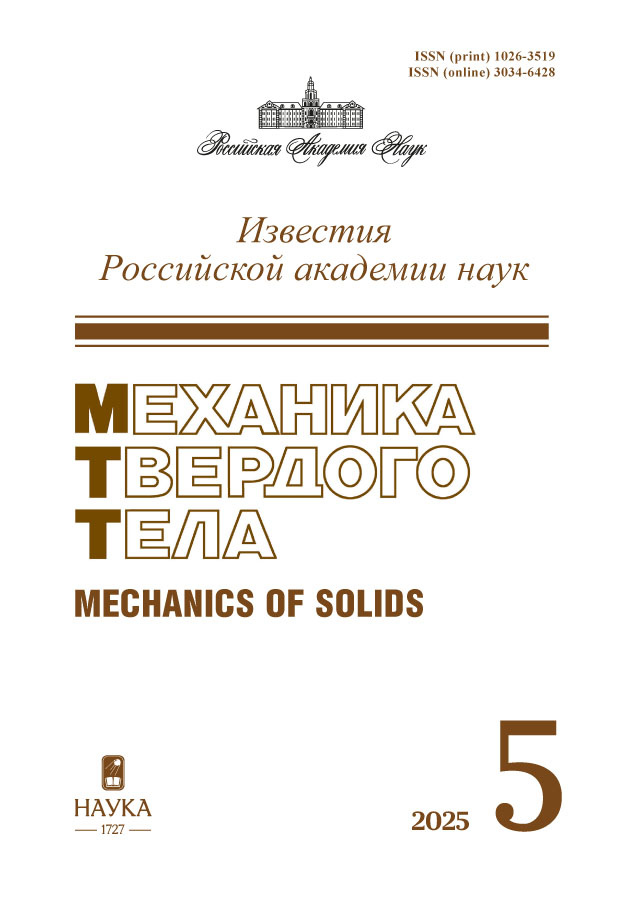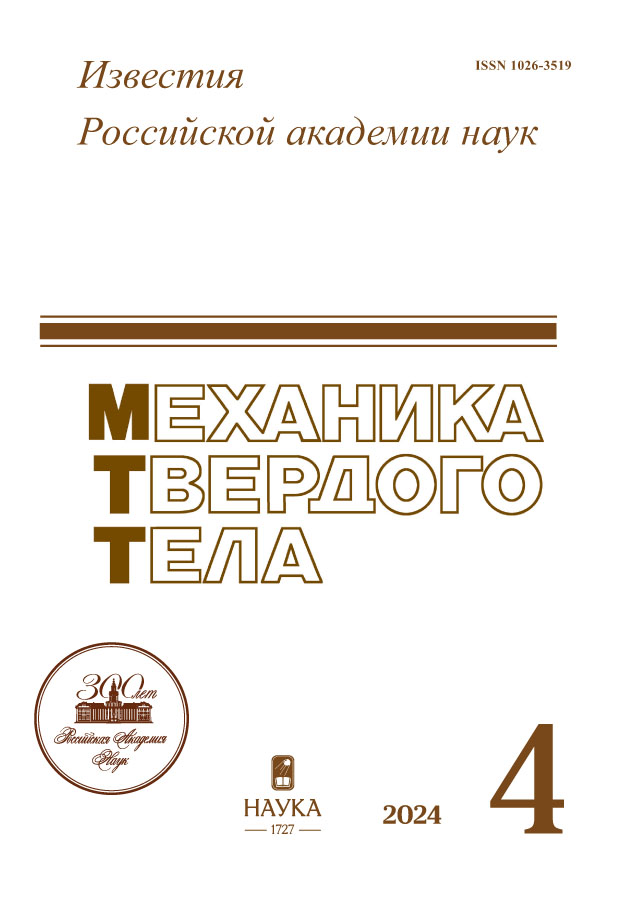О вынужденных колебаниях двойного математического маятника
- Авторы: Петров А.Г.1
-
Учреждения:
- Институт проблем механики им. А.Ю. Ишлинского РАН
- Выпуск: № 4 (2024)
- Страницы: 103-117
- Раздел: Статьи
- URL: https://rjonco.com/1026-3519/article/view/673019
- DOI: https://doi.org/10.31857/S1026351924040072
- EDN: https://elibrary.ru/UCUDNT
- ID: 673019
Цитировать
Полный текст
Аннотация
Для консервативных механических систем известен метод нормальных координат, в котором используется теорема о приведении двух квадратичных форм к сумме квадратов. В этом случае система дифференциальных уравнений расщепляется на систему независимых осцилляторов. Линейная диссипативная механическая система с конечным числом степеней свободы определяется тремя квадратичными формами: кинетической и потенциальной энергией системы, а также диссипативной функцией Рэлея. Исследуется линейная задача о вынужденных колебаниях двойного маятника, когда коэффициенты трения пропорциональны массам. Тогда все три квадратичные формы одним преобразованием приводятся к сумме квадратов. В нормальных координатах система расщепляется на две независимые системы второго порядка. Построено аналитическое решение в самом общем виде при произвольных длинах стержней и точечных масс. Дан полный анализ колебаний в нерезонансном случае и в случае резонансов. Получены также формулы для погрешности аналитических формул, если пропорциональность коэффициентов трения и масс нарушается.
Ключевые слова
Полный текст
Об авторах
А. Г. Петров
Институт проблем механики им. А.Ю. Ишлинского РАН
Автор, ответственный за переписку.
Email: petrovipmech@gmail.com
Россия, Москва
Список литературы
- Уиттекер Э.Т. Аналитическая динамика. М.: 2004. 500 с.
- Журавлев В.Ф. Основы теоретической механики. М. : Физматлит, 2008. 304 с.
- Четаев Н.Г. Устойчивость движения. Работы по аналитической механике. М.: Изд-во АН СССР, 1962. 535 с.
- Гантмахер Ф.Р. Лекции по аналитической механике. М.: Физматлит, 2001. 262 с.
- Гантмахер Ф.Р. Теория матриц. М: Наука, 1967. 552 с.
- Беллман Р.Э. Введение в теорию матриц. М: Наука, 1976. 352 с.
- Хорн Р., Джонсон Ч. Матричный анализ. М: Мир, 1989. 655 с.
- Mitra S.K. Simultaneous diagonalization of rectangular matrices // Linear Algebra Appl. 1982. V. 47. P. 139–150. https://doi.org/10.1016/0024-3795(82)90231-2
- Новиков М.А. Одновременная диагонализация трех вещественных симметричных матриц // Известия вузов. Математика. 2014. № 12. C. 70–82.
- Петров А.Г. О существовании нормальных координат для вынужденных колебаний линейных диссипативных систем // Изв. РАН. МТТ. 2022. № 5. С. 93–102. https://doi.org/10.31857/S0572329922050129
Дополнительные файлы













